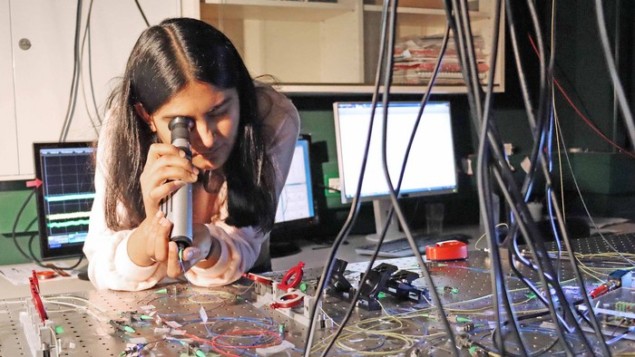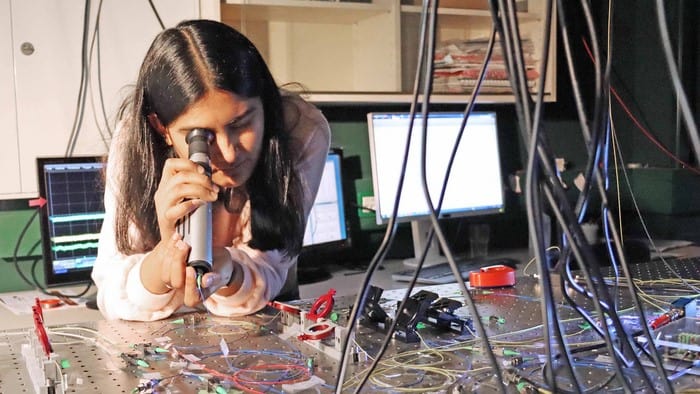
Researchers in Germany and the US have created photon gases that can exist at “negative temperatures” while undergoing basic thermodynamic processes – including expansion and compression. The research could lead to the development of new optical technologies including those for data transmission.
When a gas is cooled to very low temperatures, its particles will occupy the lowest available energy states in the system. As the gas becomes warmer, some particles will occupy higher energy states. This occupation can be done in a number of different ways and this diversity is characterized in terms of an increasing entropy.
Normally, there is no limit on the number of energy states that the particles can access and the entropy of a system can go on increasing as the system gets hotter. However, if there is a limit on the number of energy states, then the entropy will not increase as more energy is put into the system. Indeed, the entropy will decrease because the particles will become packed into the highest energy states. Such a system is similar to a low temperature system in which all the particles are packed into the lowest energy states.
Decreasing entropy
In 1949, Lars Onsager introduced the concept of “negative temperature” to describe the thermodynamic relationship between entropy and energy in such a system. As the negative temperature increases to zero from below, the energy of the system increases and the entropy decreases.
“Negative temperatures have been experimentally demonstrated in platforms such as spin systems, cold atom lattices, and most recently, vortex clusters in 2D quantum systems,” explains Demetri Christodoulides at the University of Central Florida. “However, realizing basic thermodynamic processes in the negative temperature regime has not yet been achieved.”
In a new study, Christodoulides along with Ulf Peschel at Friedrich Schiller University Jena and colleagues, explored a new experimental approach to negative temperatures. This involved exploiting nonlinear interactions between ensembles of photons travelling through thin optical fibres.
Coupled fibre loops
Their experiment involved firing pulses of light through two coupled fibre loops with slightly different lengths. This caused the photons in these ensembles to travel with distributions of velocities defined by temperature – just like the particles in a regular gas. However, the possibilities presented by the experiment stretched beyond the limitations of more conventional thermodynamic systems.
“By nature, these classical photonic configurations are governed by their own laws,” Christodoulides explains. “As such, nonlinear photonic systems can serve as a versatile platform upon which one can now observe a host of previously unknown phenomena, that would have been otherwise inaccessible in other thermodynamic settings.”
Crucially, Peschel and Christodoulides’ team could create a scenario that would have been impossible in a regular gas. A system in which all velocity states available to the photons were equally likely to be occupied. At this stage, the photons had reached their maximum possible entropy, creating a gas with an infinite temperature.
When the researchers added more energy to the coupled loops, the distribution of photon velocities began to decrease, as the photons moved towards a single, maximum velocity state.
Basic thermodynamic processes
For the first time, this enabled the team to observe basic thermodynamic processes which have so far eluded physicists studying more exotic systems in negative temperature regimes. “We observed all-optical isentropic expansions and compressions, as well as irreversible Joule expansion effects, through stable negative temperature distributions,” Christodoulides explains.
In their future research, the team hopes to create negative temperature regimes in other degrees of freedom available to photons beyond their velocity: including space, frequency, and polarization. Ultimately, this could enable researchers to fine-tune the properties of light in fascinating new ways – possibly leading to more robust and reliable optical signals, which are better suited to large-scale data transmission.
Christodoulides adds, “our approach could also provide a route for manipulating Bose-Einstein condensates and optomechanical systems as well as for developing high-brightness optical sources based on light cooling schemes.”
The research is described in Science.
